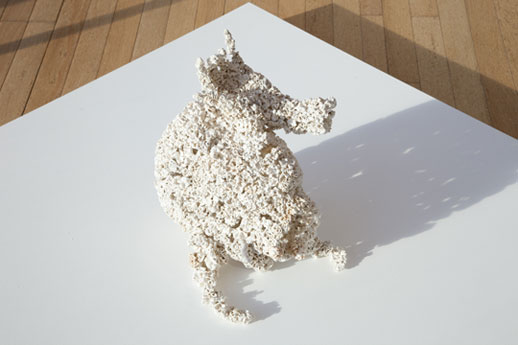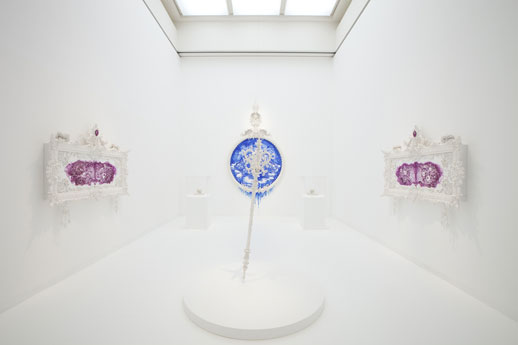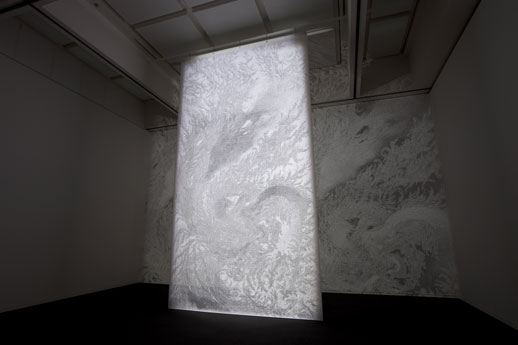Ornamentalism: Minimal isn’t always better
Any stroll through Harajuku or ride on an ad-covered subway car will show you the mode human socialization at this point in history is heavily concerned with accessorizing and personalizing.
We accumulate experiences and objects to fulfill a subconscious mandate constructing an appropriate “I as I”, making “me” feel like “me”. Our championed “power of choice” finds expression via an ever-increasing amount of minutia available for our contemplation and evaluation. Contemporary urban life is an exercise (struggle) to constantly recognize and register all those possible consumer/lifestyle/political “choices” – to the point where internally we are more concerned how we navigate these choices, rather asking why we must make so many? We build a specific social self-image via an ever more detailed databasing of minitia that is bound to eventually outpace us.
In a society where the practice of accumulation and reorganization is itself a skill (read: mobility), it is quite fitting that an expression would be found in contemporary art: Ornamentalism.
At MOT’s spacious first floor gallery, “Neo-ornamentalism” is a collection of new works by young Japanese artists that attempts to grasp the potential of ornamentation/decoration with provocative techniques and concepts. The ‘ornament’ is defined as that which adds beauty and decoration as opposed to merely function; it could even be said that the Ornamental is an outward decorative display with no specific function. This exhibition finds works with an incredible distillation of material use – artists often employing a minimum spectrum of materials to achieve a rich multiplicity of forms.

Junichi Mori’s unbelievably delicate wooden lattices, the “Flare” and “Minawa” series, invite the viewer to get closer and mount a macro lens to investigate the mystery of how they are made. Looking an aged orange color, these works appear as a bio-mesh of nodes and rings like a fruiting alien plant from an H.G. Giger planet, though more organic than mechanical. Along with the intricacy of the works there is a creeping feel of the grotesque – as in a shriveled eye or bird’s feather, like the beauty of a catacomb: Mori’s work is the most visceral of the group.
Katsuyo Aoki’s work may appear familiar; her white porcelain skulls have shown at a number of art fairs recently. Devoting a whole room, we see white walls where the magenta painted fantasy scenes of, ‘Trolldom’ and ‘MANIERA I, II’, draw in the viewer while the glistening porcelain pieces act as a frame. On the minute level, what differs in Aoki’s work in comparison to classical rococo motifs is the use of bio-elements: small sensitive-looking bumps and openings line the contours, giving the works an erotic or marine characteristic.

Be careful stepping around Motoi Yamamoto’s ‘Labyrinth (Meikyû)’, an installation of precise interlocking line-patterns made from poured salt, which covers the floor of a 10x17m room. The pattern resembles a printed-circuit board and a topographical view of a coastline where rivers feed into the sea. This work’s combinations of cartographic and electronic motifs push the viewer to navigate two colliding directions of abstraction: enlargement of the micro vs. simplification of the macro, for in this work, as in others at the show like (Hiroshi Mizuta hallucinatory oil paintings and Kentaro Yokouchi’s dyed silk landscapes), the concrete is ungraspable amongst the multitude visual layers in the work.
Gazing at Mizuta’s 6m-long oil painting ‘Apartment (Manshon)’ it takes a few moments to pull the specific content out of the repetitive luminescent patterns, layered on a bruised sienna background. We see something most urban residents are familiar with: the drone of an apartment block’s façade. Mizuta’s other paintings – ‘Sidewalk (hôdo)’ and ‘Road (dorô)’ – are equally magical in asking you to pull the pattern out of the mist.
Similar effects of layered abstraction are present in a number of the 2D works: Nao Matsumoto’s ‘Midnight Constellation’ and Yokouchi’s “Book – AO NAE” series, in addition to Mizuta. Front, mid and rear planes are of depth are mixed in a non-unified way. Like looking out the window of the train at night we see three planes simultaneously; the glass itself, the interior scene reflected and the exterior scenery.

Also playing with this visual synchronism is Tomoko Shioyasu’s masterful ‘Cutting Insights’. In a black high-ceiling room a 6m long piece of hanging paper is lit from two angles, projecting infinitely fine cutouts of a dragon and cock motif, luminously cast onto the back wall. Because of the lamps’ depth-of-focus, both the anterior and posterior layers are sharply visible.
Ornamentalism is often associated with architecture: baroque and rococo styles adorned with cherubs and fleur-de-lis, or even further back in history to the meticulous geometric patterns on ancient tombs and pottery. Today we don’t really question why minimal or functional design is a priori better than the messy, elaborate or the repetitive. But this tendency comes from a rejection of Ornamentalism with the move toward industrialized society beginning in the late nineteenth century. In this sense a return to an art based on ornamental practice is a recuperation of artistic values entirely appropriate to a postmodern age of overproduction, abstraction, and mass culture. “Neo-ornamentalism” lucidly engages with the contemporary overstimulation of the visual, providing useful discourse for the present era.
Kenneth Masaki Shima
Kenneth Masaki Shima



